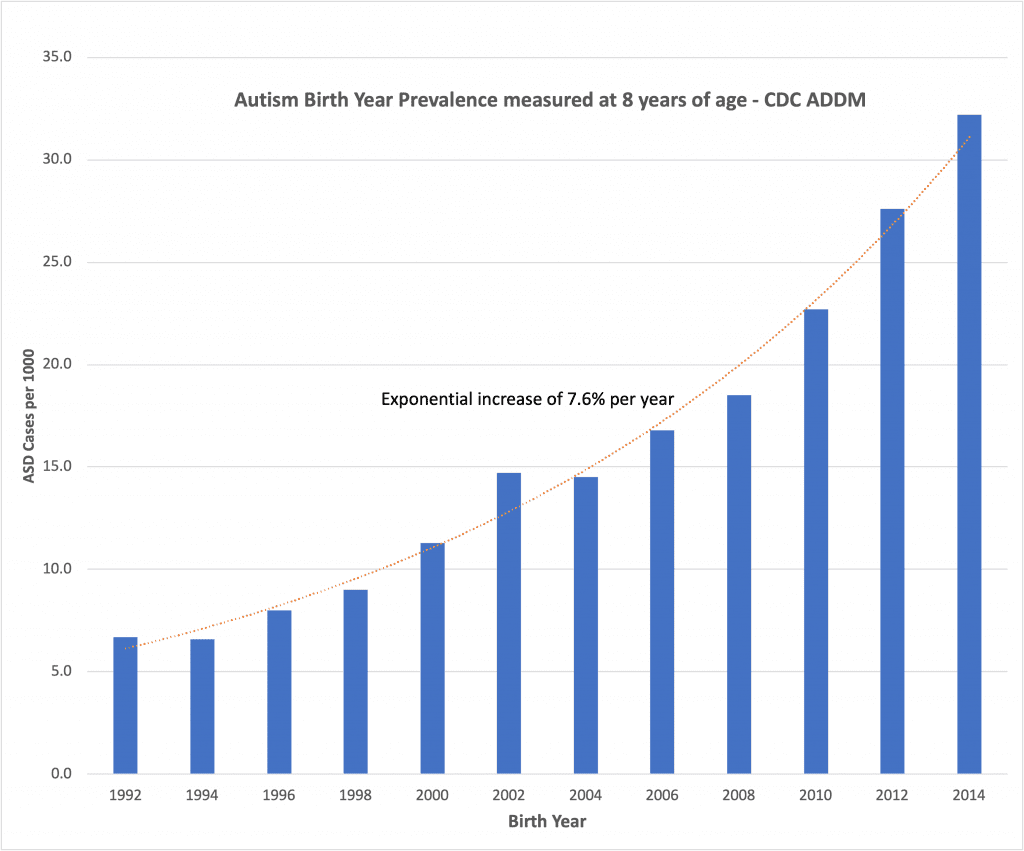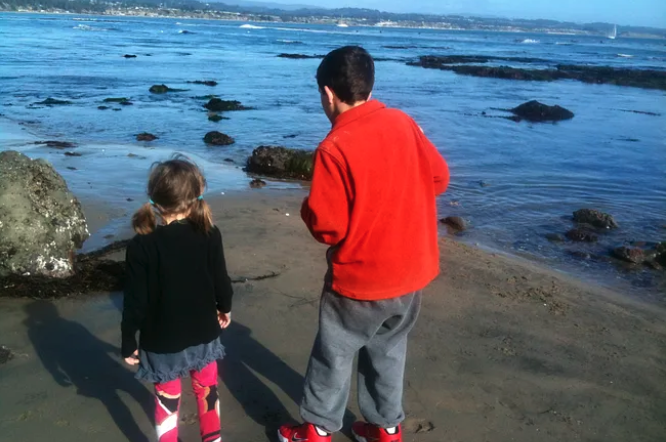What the New CDC Autism Numbers Actually Tell You
This post is adapted from an article I wrote before the CDC published their new autism report on April 15: https://autismloveandscience.substack.com/publish/post/161442763
On April 15, 2025, the CDC issued a new report on Autism Spectrum Disorder (ASD) among children born in two different years — 2014 and 2018. They report the prevalence for each of those birth years using data from 2022. That is, one group was 8 years old and the other was 4 years old. There have been many headlines and articles about this. But, as expected from reporting on previous CDC reports, almost all of the news reports got the basic message wrong. They say that the CDC found “1 in 31 children” have ASD. By saying simply “children,” it readers are bound to interpret it to mean mean children of all ages, presumably up to age 18. But that is both false and practically impossible. (Think about it: did people who were 16 years old in one report suddenly have a lot more autism when they turned 18? And what happened when they turned 19? That’s obviously nonsense.)
Each of the CDC reports from the Autism and Developmental Disabilities Monitoring Network (ADDM) give “prevalence” numbers for one specific birth year. The reports on 8 year olds are reports on children who were born 8 years before each study year. These reports covered the even numbered birth years starting 1992. They show birth year prevalence increasing exponentially at 7.6% per year from 1992 to 2014, including the most recent results. See the figure below.

The face value of this evidence is that there has been a huge, rapid increase. The most logical explanation is that it is a real increase. There is no known valid evidence that the increase was caused by other factors, such as awareness, early intervention, or changes in criteria. There have been many articles claiming that those other factors caused an apparent but not-real increase. Even more came out right after this new CDC study. I study this topic intensively and I published the only known method to distinguish how much of such an increase is real and how much was caused by other factors. I have deeply investigated the proposed alternative explanations, chasing all references and trails of references. As far as I can find, none of the articles making such claims cite valid evidence to support those explanations.
Four year-olds vs. eight year-olds
The surprise this time is the pile of big whoppers about the new data on four year olds born in 2018. This new study reports the birth year prevalence of birth year 2018 up to age 4. They had to stop at age 4 because data collection was in 2022. They found an even greater count by age 4 for birth year 2018 than they did by age 8 for birth year 2014. That should be a shock to everyone. The report is explicit:
“Children born in 2018 (aged 4 years in 2022) had 1.7 times the cumulative incidence of ASD diagnosis or eligibility by age 48 months as children born in 2014 (aged 8 years in 2022) (22.6 per 1,000 children compared with 13.1.”
That’s a 73% increase from birth years 2014 to 2018, comparing apples to apples! But in their summary interpretation they speculated:
“Identification by age 48 months was higher among children born in 2018 compared with children born in 2014, suggesting increased early identification consistent with historical patterns.”
There is no evidence that early identification caused that increase. None in this report and none in prior reports, and they did not say there is. Perhaps early screening contributed some but we don’t yet have enough information to know. It’s not even plausible that it caused all of that increase. But that didn’t stop the news outlets from spinning it. For example, the New York Times wrote:
“The health agency noted that the increase was most likely being driven by better awareness and screening, not necessarily because autism itself was becoming more common.” [Emphasis added.]”
If someone from the CDC said that, it is not in the report. There is no evidence that this statement is true.
I have studied this topic intensely for years. All available data shows an extremely consistent pattern of the ages at which people are diagnosed with autism. According to the California DDS, 41% of those who are eventually diagnosed with autism are diagnosed by age 4, and 73% are diagnosed by age 8. A similar pattern appears in both California DDS data and in Danish national data.
In other words, the 2018 cohort is almost certain to have a much greater birth year prevalence when they turn 8 than the 2014 cohort. It would take a miracle for the CDC’s latest data on 4 year olds to mean anything other than a huge, real increase from birth years 2014 to 2018.
Race, Ethnicity and Income
The story about race, ethnicity and median household income is also very important. The increases in birth year prevalence has been greater among non-whites and among those with lower income over recent CDC reports. While many articles try to spin that as meaning that we are finally catching up with diagnosing children in those non-white and lower income groups, that’s not what the data show. The face value of the data, and the most logical explanation, is that true birth year prevalence among those groups has actually increased more quickly. That is, the disparity is in actual rates of autism, not just historically limited access to diagnostic services.
What does this mean to you?
The CDC autism reports show a large increase in the rate of occurrence of new cases of autism. That’s called case incidence. That means that something, or some set of things, had to have changed and caused it. That could be almost anything except inherited genes. That’s pretty much the definition of environmental causes. And that means that we should be seriously searching for preventable environmental causes. While that’s more difficult than most people realize, it is possible. The first step is admitting reality.
And, I shouldn’t have to mention this but apparently I do: A real increase in autism incidence, caused by some unknown set of factors, does not mean that vaccines had anything to do with it.
By: Alexander MacInnis





